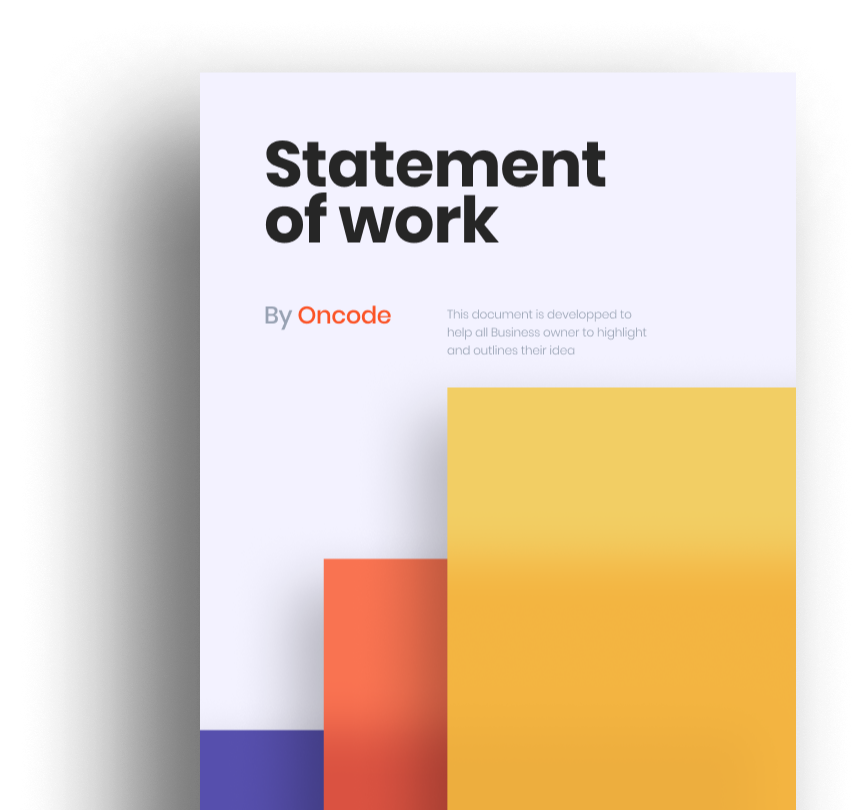Case Studies
Statement of Work

What is a specification?
The specifications are a two-part document that integrates the technical and functional parameters of the project. Not writing specifications before launching the development of a product is like not having made a plan before building a house.
It allows the client to let the service provider know what is expected of him during the project. It describes precisely the needs to which the provider or the tenderer must respond, and organizes the relationship between the different actors throughout the project.
Why write a specification?
The specifications provide technical and functional information, and specify the product requirements and constraints. It generally includes the technical environment (procedures, backups, etc.), the languages and tools to be used and their respective versions, the feasibility of the project, and security constraints.
It also takes into account the economic, environmental, material and industrial constraints.
The functional part structures the project by specifying the services to be rendered, the constraints of the product, service, process, intellectual service or software. It generally includes the details of the project, the participants and the study of the needs.
Download now
Your copy of the statement of work
Main sections of a specification
The glossary is of paramount importance. It gives meaning to the vocabulary used in the document to avoid any misunderstanding between the parties. Without these definitions, and the rigor that the glossary forces to be maintained, it happens for example that words like customers or users can be interchanged to define the same person, which can cause confusion during the development of the product.
There may be many people using the end product who do not have the same capabilities or rights to the product. Some people have access to strategic, administrative information, and others simply cannot modify the content displayed. Defining the hierarchies between the types of users and the possible use they can make of the product is essential to the proper functioning of a project.
This part allows you to understand the features to be developed. Telling the story of the use of the product from a user’s point of view allows you to better define the features and their functional dependencies in all usage situations. It also helps to avoid omissions and “dead ends” in the use of the product.
To define the structure of the information, it is important to put on paper the arrangement between the contents. On an Internet site, this structure can be called SiteMap, a term that allows you to understand the interest of the procedure. By writing the tree structure, you can better define the desired user journey, and the content creation that will be necessary to make the experience match your wishes.
In this section, you can define existing constraints, such as desired hosting, budget, deadlines, or any other information that will help the different providers to complete the tasks according to your precise expectations. This is also the place to share pre-existing content for the development, such as wireframes or the creative brief for the design.
Once the set of requirements is well identified, it is important to separate the set of requirements into different deliverables. The separation of a project into different deliverables allows for a quicker time to market of a first prototype and therefore a quicker return from potential clients.
Download now
Your copy of the statement of work